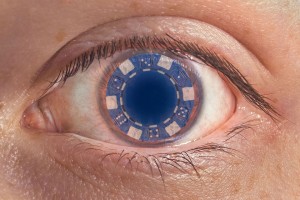 There’s hardly a gamer out there who hasn’t heard of the “Mass Effect” series. The original trilogy, while often made fun of for its nonsensical ending, still remains one of the most epic, spectacular tales of adventure, comradery and heroism in the world of gaming, period. The folks at Bioware were at their prime when they worked on the series, releasing numerous hits (such as the trilogy itself, as well as “Dragon Age: Origins”) pretty much back-to-back… Before being purchased by publishing giant Electronic Arts. That’s really where the problems began for the company, and for the series. EA rushed both “Dragon Age 2” and “Mass Effect 3” out the door, and it shows. “Dragon Age 2” is largely considered to be half-finished, and “Mass Effect 3”, while still a genuinely good game, suffered from many problems, particularly the ending which was so badly written that it implied the galaxy was pretty much doomed no matter what the player did over the course of three games, requiring Bioware to release a patch in order to remove some of the plot holes and give players a conclusion to the saga that was slightly more satisfying. Deciding to give both franchises a do-over, EA commanded Bioware to pull them off for a few years and reinvent them for the next console generation, resulting in “Dragon Age: Inquisition” and “Mass Effect: Andromeda”. The former was great! The latter… Well, it’s complicated. Let’s dig deeper.
There’s hardly a gamer out there who hasn’t heard of the “Mass Effect” series. The original trilogy, while often made fun of for its nonsensical ending, still remains one of the most epic, spectacular tales of adventure, comradery and heroism in the world of gaming, period. The folks at Bioware were at their prime when they worked on the series, releasing numerous hits (such as the trilogy itself, as well as “Dragon Age: Origins”) pretty much back-to-back… Before being purchased by publishing giant Electronic Arts. That’s really where the problems began for the company, and for the series. EA rushed both “Dragon Age 2” and “Mass Effect 3” out the door, and it shows. “Dragon Age 2” is largely considered to be half-finished, and “Mass Effect 3”, while still a genuinely good game, suffered from many problems, particularly the ending which was so badly written that it implied the galaxy was pretty much doomed no matter what the player did over the course of three games, requiring Bioware to release a patch in order to remove some of the plot holes and give players a conclusion to the saga that was slightly more satisfying. Deciding to give both franchises a do-over, EA commanded Bioware to pull them off for a few years and reinvent them for the next console generation, resulting in “Dragon Age: Inquisition” and “Mass Effect: Andromeda”. The former was great! The latter… Well, it’s complicated. Let’s dig deeper.
To be perfectly honest, I knew that there was a problem during development all the way back in summer 2015, when at E3 EA resorted to showing a developer diary and some concepts for the game rather than an actual trailer despite the fact that it had been in development for four years at that point. I mean, really? You’re resorting to buzzwords and interviews with game developers praising their own game instead of, you know, showing us the actual game? Even a theatrical CGI trailer would’ve been something! The next big issue for the game came when it was discovered that Manveer Heir, the lead game designer behind “Mass Effect: Andromeda”, was openly racist and had a history of racist tweets. If you’re wondering why you never heard about this until now, well, it’s because his racism is directed towards white people, and racism towards whites is treated about as seriously as domestic violence against men – most people like to pretend it doesn’t exist. Heir’s racism has found its way of bleeding into the game as well – while the default models for the protagonist is white, if you choose to change it in the character creator you’ll find that it’s actually fairly difficult to make a white person, with options for skin color ranging from “tanned” to “very dark”. This could have probably been attributed to a glitch, except the Codex very clearly states that in the future of “Mass Effect: Andromeda” the white race is extinct due to interracial breeding. Allow me to point out that “Andromeda” takes place 200 years after the original “Mass Effect” trilogy, which had plenty of white people, and that it is impossible to eradicate an entire race on a galactic level within a mere two centuries, but what do I know.
The racism against whites displayed in the final game is problematic, but they’re not even the worst victims of discrimination in “Mass Effect: Andromeda” – that distinction would have to go to trans people. Bioware has decided to represent them by including a minor character called Hainly Abrams who is a trans woman, and it may just be one of the worst representations of a trans person I’ve ever seen – it’s a child’s idea of what a trans woman is. She’s someone whose entire life was defined by her gender, who decided to leave her home galaxy and explore Andromeda literally for no other reason than because nobody there would know that she’s trans… Which she immediately contradicts by revealing her transsexuality to the main character completely unprovoked and out of the blue, without being asked. Compare and contrast this to another trans woman in a videogame, Erica from 2011’s “Catherine”. She is treated and addressed as a woman throughout the entire game by both her boss and her close group of friends, right up until the end (and even then it’s just one of the endings) when one of the characters brings up the fact that her friends knew her as Eric in high school, which she dismisses with a joke. She isn’t there to make some kind of grand statement and hit you over the head with it, she’s there because she’s a great, fun character who just so happens to be trans – that’s part of who she is, but not a big part, and we learn a LOT more about her before we even get to that reveal (which, again, a lot of people don’t even see because they got a different ending).
And of course, we need to talk about the elephant in the room – story and social justice issues aside, “Mass Effect: Andromeda” launched in a technically incomplete state, with MANY glitches and animations that look downright disturbing. Pretty much every single human character in the game, as well as most characters belonging to the humanoid asari race, have plummeted straight to the bottom of the uncanny valley, with little chance of redemption. We don’t know exactly what went wrong in the development process, but the best guess (put forth by the animations director behind the first “Mass Effect”) is that the team was planning to touch up these animations manually, and then simply ran out of time, with EA pushing for a spring 2017 release. Whatever the case, the animations look atrocious, and in a game that’s half about talking to people, that is inexcusable.
But I don’t want to make this blog to bash Bioware, or the game. Quite the opposite, actually – I’m making it to praise them. Because the thing is, “Mass Effect: Andromeda” was a hotly anticipated next installment of a beloved franchise that had been dormant for five years, so it’s been keeping steady as the number 1 best-selling game every single week since launch, despite the fact that we’ve also had other hotly anticipated titles join the fray, such as “Persona 5” and “Kingdom Hearts HD Remix”. Bioware doesn’t really need to do anything at this point, they’ve made their money. Their best bet would be to offer an ambiguous “we’re listening to complaints and will do better next time”, but that’s not what they did. Instead, they’re promising changes. Some, such as a fix for a lot of the glitches and the animations, have already been implemented. Others, such as more options in the character creator to make creating white characters easier and rewriting Hainly Abrams’ dialogue so that it represents trans people more accurately. In addition, they’re also adding more gay romance options for a male protagonist, which is always welcome (no fair if the ladies get most of the fun). And while Bioware have never officially confirmed it, there’s a lot of evidence to suggest that Manveer Heir is no longer employed at the company. The point is, the developers are trying to make a good game. Sure, it’s lousy to try and fix it NOW, after it has already been out for weeks, while other recent releases like “Zelda: Breath of the Wild” and “Nier: Automata” have been practically flawless on every level on launch day, but it’s better than not fixing it at all. And even though I could never support the messy release, credit should be given where credit is due. Hoping for the best, Bioware! Don’t let me down again!

 Let me ask you a question – how much do you typically like to spend on online games? I’m not really talking about games that you purchase once, and that’s that – I mean games where you can spend a practically infinite amount of money. Free to play games like “The Old Republic”, “Clash of Clans”, “Marvel Future Fight”, “Candy Crush Saga,” “Pokémon GO” and more, which are completely free to download and play for as long as you want, but you can use real life money to purchase things like skins, items, characters, weapons, in-game currency and other bonus goodies. How much do you typically spend on those types of games? Maybe you spend absolutely nothing, preferring to simply enjoy the game for absolutely free and see how far you can get within the limitations that free-to-play players encounter. Or maybe you just buy the bare minimum, such as the ability to have an additional life every single run in “Sonic Dash” for £1, or a subscription of 75 crystals every single day for about £3 in “Marvel Future Fight”. Or, if you’re like me, you occasionally like to open up your wallet, spending £10-15 on in-game items and bonuses in order to unlock that one lucrative character or upgrade the person you already have.
Let me ask you a question – how much do you typically like to spend on online games? I’m not really talking about games that you purchase once, and that’s that – I mean games where you can spend a practically infinite amount of money. Free to play games like “The Old Republic”, “Clash of Clans”, “Marvel Future Fight”, “Candy Crush Saga,” “Pokémon GO” and more, which are completely free to download and play for as long as you want, but you can use real life money to purchase things like skins, items, characters, weapons, in-game currency and other bonus goodies. How much do you typically spend on those types of games? Maybe you spend absolutely nothing, preferring to simply enjoy the game for absolutely free and see how far you can get within the limitations that free-to-play players encounter. Or maybe you just buy the bare minimum, such as the ability to have an additional life every single run in “Sonic Dash” for £1, or a subscription of 75 crystals every single day for about £3 in “Marvel Future Fight”. Or, if you’re like me, you occasionally like to open up your wallet, spending £10-15 on in-game items and bonuses in order to unlock that one lucrative character or upgrade the person you already have. If you deny the fact that the Free to Play market is here to stay, you’re clearly not familiar with just how big it has grown. Ten years ago, the idea that developers could release games for free and could later charge for smaller things such as extra lives, characters and bonuses seemed absolutely preposterous, and yet here we are, with the F2P market flourishing and bringing a substantial percentage of overall videogame profits. Some of the biggest videogame franchises, such as “Angry Birds” (which, as of right now, served as the source of the
If you deny the fact that the Free to Play market is here to stay, you’re clearly not familiar with just how big it has grown. Ten years ago, the idea that developers could release games for free and could later charge for smaller things such as extra lives, characters and bonuses seemed absolutely preposterous, and yet here we are, with the F2P market flourishing and bringing a substantial percentage of overall videogame profits. Some of the biggest videogame franchises, such as “Angry Birds” (which, as of right now, served as the source of the  I don’t need to tell you that E3 is, by far, the biggest gaming show/convention of all time. While other conventions, like Tokyo Game Show and PAX, are gradually growing and gaining more traction, it seems highly unlikely that any of them will be able to dethrone E3 as the absolute leader any time soon. This year, E3 was bigger than ever, with no less than nine presentations running across the first three days of the event. It was crazy! At some point I had to actually stop watching one of the presentations midway through to switch to the other, and I don’t think that’s ever happened at E3 before (though I could be wrong, my memory is notoriously bad). But bigger isn’t always better, and the question is, were we satisfied?
I don’t need to tell you that E3 is, by far, the biggest gaming show/convention of all time. While other conventions, like Tokyo Game Show and PAX, are gradually growing and gaining more traction, it seems highly unlikely that any of them will be able to dethrone E3 as the absolute leader any time soon. This year, E3 was bigger than ever, with no less than nine presentations running across the first three days of the event. It was crazy! At some point I had to actually stop watching one of the presentations midway through to switch to the other, and I don’t think that’s ever happened at E3 before (though I could be wrong, my memory is notoriously bad). But bigger isn’t always better, and the question is, were we satisfied? In 2016, gaming and gambling have both become as accessible as they’ll ever be, unless we somehow evolve to the point where we get born with smart devices embedded in our eyeballs. While only 10-15 years ago the only way to play videogames was to purchase a piece of hardware that cost north of $300, and then a bunch of games for it each priced at $60, which made this hobby rather inaccessible. Similarly, if you wanted to gamble, you had to do so at a physical casino, most of which require a fancy suit and a good group of friends, not to mention a solid investment. After all, you can’t just barge into a casino with a few coins and want to spend a good time now, can you? However, with the advent of online casino, you can now literally just spend 10 minutes gambling and leave it at that. And when it comes to gaming, the “free to play” market has never been more successful, with free games such as “League of Legends”, “SMITE” and “Dota 2” utterly dominating the market. Most laptops now can support a good chunk of the games on the market, and if you’re not a fan of gaming on a laptop, no worries – you can play a ton of games right in your smartphone! Bottom line is that gaming and gambling have never been more accessible, and while that’s a wonderful thing for the most part, it has also raised a lot of concerns.
In 2016, gaming and gambling have both become as accessible as they’ll ever be, unless we somehow evolve to the point where we get born with smart devices embedded in our eyeballs. While only 10-15 years ago the only way to play videogames was to purchase a piece of hardware that cost north of $300, and then a bunch of games for it each priced at $60, which made this hobby rather inaccessible. Similarly, if you wanted to gamble, you had to do so at a physical casino, most of which require a fancy suit and a good group of friends, not to mention a solid investment. After all, you can’t just barge into a casino with a few coins and want to spend a good time now, can you? However, with the advent of online casino, you can now literally just spend 10 minutes gambling and leave it at that. And when it comes to gaming, the “free to play” market has never been more successful, with free games such as “League of Legends”, “SMITE” and “Dota 2” utterly dominating the market. Most laptops now can support a good chunk of the games on the market, and if you’re not a fan of gaming on a laptop, no worries – you can play a ton of games right in your smartphone! Bottom line is that gaming and gambling have never been more accessible, and while that’s a wonderful thing for the most part, it has also raised a lot of concerns. On September 1st, 2015, “Metal Gear Solid V: The Phantom Pain”, the hotly anticipated fifth (well, actually seventh without counting the spin-offs, but who cares) instalment of the highly popular “Metal Gear” saga was finally released to much ovation. Critics and fans loved it, with the PS4 version
On September 1st, 2015, “Metal Gear Solid V: The Phantom Pain”, the hotly anticipated fifth (well, actually seventh without counting the spin-offs, but who cares) instalment of the highly popular “Metal Gear” saga was finally released to much ovation. Critics and fans loved it, with the PS4 version  Hello, is this thing on? My name is Youp Aalten, and I am the editor-in-chief of PsyGarden – a France-based online magazine about gaming in all of its forms! While we are a brand new publication looking to try our luck in an already very contested environment, our staff of 12 (5 of which, including myself, are writers) has a great deal of experience working in games journalism and the gaming industry. I personally used to be part of a major gaming consulting company which worked with major French developers such as
Hello, is this thing on? My name is Youp Aalten, and I am the editor-in-chief of PsyGarden – a France-based online magazine about gaming in all of its forms! While we are a brand new publication looking to try our luck in an already very contested environment, our staff of 12 (5 of which, including myself, are writers) has a great deal of experience working in games journalism and the gaming industry. I personally used to be part of a major gaming consulting company which worked with major French developers such as